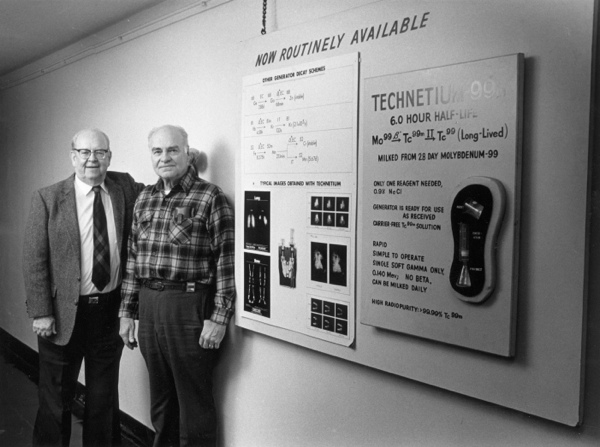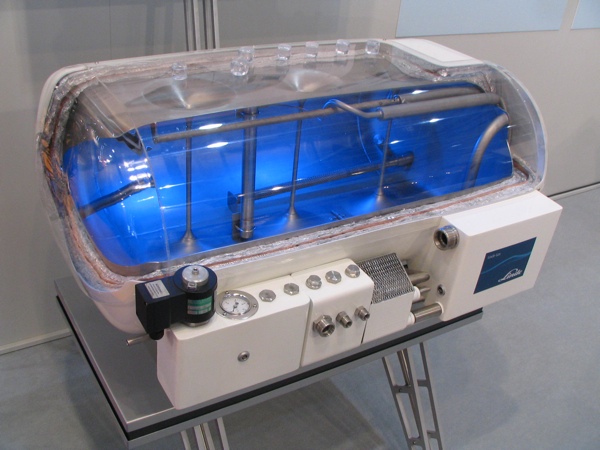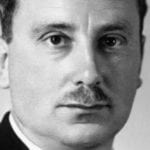 Movies and TV
Movies and TV  Movies and TV
Movies and TV  History
History 10 Things You Never Knew About Presidential First Ladies
 Movies and TV
Movies and TV 10 Zombie Movies That Will Actually Terrify You
 Humans
Humans 10 Times Scientists Were Absolutely Sure… and Absolutely Wrong
 Our World
Our World 10 Pivotal Moments for Life on Earth
 Movies and TV
Movies and TV 10 Most Realistic Medical TV Shows of All Time
 Creepy
Creepy 10 Eerie & Mysterious Ghosts of the Pacific Coast
 Weird Stuff
Weird Stuff 10 Typos That Accidentally Changed History
 History
History 10 Times Trickery Won Battles
 Technology
Technology 10 Awesome Upgrades to Common Household Items
 Movies and TV
Movies and TV 10 Movie Flops That Found Their Way to Cult Classic Status
 History
History 10 Things You Never Knew About Presidential First Ladies
 Movies and TV
Movies and TV 10 Zombie Movies That Will Actually Terrify You
Who's Behind Listverse?

Jamie Frater
Head Editor
Jamie founded Listverse due to an insatiable desire to share fascinating, obscure, and bizarre facts. He has been a guest speaker on numerous national radio and television stations and is a five time published author.
More About Us Humans
Humans 10 Times Scientists Were Absolutely Sure… and Absolutely Wrong
 Our World
Our World 10 Pivotal Moments for Life on Earth
 Movies and TV
Movies and TV 10 Most Realistic Medical TV Shows of All Time
 Creepy
Creepy 10 Eerie & Mysterious Ghosts of the Pacific Coast
 Weird Stuff
Weird Stuff 10 Typos That Accidentally Changed History
 History
History 10 Times Trickery Won Battles
 Technology
Technology 10 Awesome Upgrades to Common Household Items
10 Hard Fought Races in Science History
Sometimes the process of science is the ultimate opportunity for overcoming political, social and religious boundaries to better mankind. Sometimes it’s a petty, spat-fuelled race to prove who’s got the biggest smarts. These are ten of history’s most prominent example of the latter.

In the early 1980s, an unknown illness began to claim victims in the United States. Initially termed Gay Related Immune Deficiency, by 1982 the name AIDS was coined. The disease had killed 121 people by the end of 1981, but scientists still didn’t know what was causing it. The race to find out was split between teams in Maryland, US and Paris, France. The teams were headed by scientists Robert Gallo and Luc Montagnier respectively.
It only took two years for the HIV virus to be discovered—followed by a saga of disagreement over who had discovered it first. Ultimately the credit went to Luc Montagnier’s French team—in 1991, Gallo admitted his key samples came from the Paris lab. In 2008 Montagnier won the Nobel Prize for his discovery, though some thought Gallo had done enough to warrant inclusion. Since, the two men have set a shining example of how to productively deal with conflict—for example, co-writing articles as “co-discoverers” of the HIV virus. Some others on this list could’ve done with following that example.

Some races in science emerge organically from the state of scientific knowledge. The race to develop synthetic human insulin was arranged up front. For fifty years, from the discovery of insulin in the 1920s, cow and pig insulin had been used to treat human diabetes patients. Allergic reactions in some and the difficulty in maintaining supply from livestock led to the need for a different approach. Genetic engineering via the emerging recombinant DNA technology held the most promise. In 1976 the leading US insulin producer, Eli Lilly & Co, arranged a symposium with leading scientists that sparked a hard-fought three way race.
The competitors were biotech company Genetech, founded by scientist Herbert Boyer; the University of California—San Francisco; and a team from Harvard. Each chose a different approach and the lead in the race skipped around between the teams. Legal, not scientific constraints were some of the most troublesome—the Harvard team lost an initial advantage because they didn’t have a lab that met regulations, eventually taking use of a lab at nearby MIT. Later, the use of human genetic material required a germ-warfare quality laboratory, so the Harvard team negotiated use of a military facility in England, whereas the San Francisco team took their work to France. Genetech, who had synthesized the gene artificially instead of taking it from humans, didn’t have the same legal obstacle. Genetech won the race but the other teams hadn’t been far behind—the whole thing had taken just a couple of years. There 1 million type-1 diabetes sufferers in the US living long, normal lives—they all have this race to thank.

The race to discover Neptune is unusual in that neither of the parties knew the other was searching. In the mid 19th century, it was noticed that the orbit of Uranus didn’t fit what was expected from the models of the day. In June 1846, French mathematician Urbain Jean Joseph Le Verrier presented to the French Académie des sciences a memoir describing his predictions for a new planet to account for the problems with Uranus (make your own jokes). He did not know, however, that a similar prediction had been made by British mathematician John Couch Adams and, when they realized the French were also onto it, the Brits began a search for the planet at the Greenwich observatory.
The discovery was announced following its sighting by the Berlin observatory, prompted by Le Verrier, in September 1846. The British had actually found it the previous month, twice, without realizing it because their star maps weren’t up to date. Still, not wanting to be outdone, the Brits made very well known their claims to some of the glory—claims which many now consider to be exaggerated, and which devastated Le Verrier who died without the recognition he really deserved.

The periodic table is one of the most elegant and recognizable achievements in science. The elements fit rather neatly into various groups, based on things like their chemical properties. When Dmitri Mendeleev produced early versions of the table during the 1860s, there was a gap for an element that no one had yet discovered. Mendeleev provisionally dubbed it ekamanganese and it would go on to elude chemists, lots of chemists, for over sixty years. There were attempts and false alarms from scientists from Russia, Germany, Japan, and Poland who thought they might’ve found it, but the official discovery was made by Italian physicist and Nobel laureate Emilio Segre in 1937.
Technetium was the first element to be produced artificially. Today, there are thousands of technetium generators worldwide for its medical uses. It’s used in tens of millions of medical scans per year and some readers of this article have likely consumed it at some point—and it may well have saved some of their lives.

Whilst many consider the race to the moon to be the pinnacle of the space race in the 1960s, the race to put an object in orbit started everything and dominated the 1950s. It began after World War II, with the USSR, the US and the UK collecting as many rocket scientists from the former Nazi Germany as possible. The International Geophysical Year of 1957-58 was one key catalyst, a 67-country event to further science including the launching of a satellite.
The US’s earliest rocket project, Orbiter, was stopped in the mid 1950s and the US Navy and US Army conducted their own research programs for awhile. These smashed record after record of how far missiles could reach into space, but victory in the race to orbit was to go elsewhere. On October 4th 1957 the USSR launched the now-famous Sputnik one, which went on to orbit the Earth in just 98 minutes. The US scrambled to catch up, but its first attempt in December 1957 exploded during launch. The Soviets successfully launched a dog, named Laika, into orbit before the US managed to put its Explorer 1 into orbit in 1958. You can listen to the recorded transmissions of Sputnik and Explorer here.

The history of heart surgery begins with the Second World War. US army surgeon Dwight Harken, after practicing on animals, became the first person to prove surgery on the human heart was possible by removing shrapnel from the hearts of injured soldiers. For the next twenty years human heart surgery flourished. Doctors developed the ability to repair all kinds of heart problems, aided immeasurably by the invention of the heart-lung machine in the late fifties. Some hearts, however, couldn’t be repaired—a replacement was needed.
The first ever heart transplant was carried out between two dogs in 1959 by Norman Shumway, marking the start of a 9-year race to be the first to carry out a human heart transplant. Shumway lead the field in developing the techniques to perform a heart transplant. He operated on over 200 dogs, as did Brooklyn surgeon Adrian Kantrowitz. The world waited for the first heart transplant and expected it would be done in America, but the record was taken by a complete outsider from South Africa, Christiaan Barnard. The race was stolen and Barnard’s name landed in the history books, but the real heroes were Shumway and Kantrowitz who continued the hard work to turn the heart transplant into the procedure that now saves thousands of lives per year.

The discovery that DNA was the carrier of genetic information was made in the 1940s. The race to discover its structure began shortly after. Linus Pauling, one of the century’s greatest scientists, worked on the project in California, proposing a triple helix. In King’s college, London, Maurice Wilkins and Rosalind Franklin used an experimental approach based on x-ray diffraction images of DNA. In Cambridge, Francis Crick and James Watson, inspired by the work of Pauling, were building physical models in their lab. It was the approach fromCambridge that proved to be successful, but not without controversy.
Wilkins, frustrated at Franklin’s reluctance to share her theories, showed his research partner’s results to the Cambridge team without her consent. This helped Watson and Crick make a crucial step, and they announced their discovery of the double helix shortly afterwards. Watson, Crick and Wilkins won the Nobel Prize in 1962, but Rosalind Franklin died in 1958 and tragically missed out. Austrian biochemist Erwin Chargaff, whose work had also contributed greatly to Watson and Crick’s success, was so annoyed at missing out on his share of glory that he wrote letters to scientists around the world complaining, then became a rallying force against the entire field of microbiology.

Few scientific research projects have their completion announced by world leaders. The Human Genome Project was an exception. Bill Clinton and Tony Blair announced a working draft of the genome in June 2000—this was followed by the complete one in 2003. The 2000 announcement followed the end of a hard-fought and at times bitter race to the finish of a project that’s been called one of the great achievements in human science, on a par with splitting the atom and going to the moon.
The Human Genome Project, a publicly funded project, had been working since 1990 to complete the genome. Their competitor came late in the game. Celera Genomics, founded by famed scientist Craig Venter, announced in April 2000 that they were potentially weeks away from publishing a working draft. The race was too close to call and the sprint was on. Ultimately, following weeks of negotiation, the two sides declared a draw, and the announcement of completion was made jointly. Whilst there was much hyperbole, the swift medical revolution many had hoped for never quite came, but the project remains a massive achievement and invaluable in medical research today.
 Heike Onnes and James Dewar had one of the fiercest career-long rivalries in the history of science. The two men couldn’t have been less alike. Dewar represented the old archetype of science, a lone genius guarding his secrets, building his own equipment (he invented the vacuum flask) and, as the similar lone genius Newton had done, alienating and annoying almost every one of his peers. Onnes was forward looking, foreseeing an open, cumulative worldwide scientific effort.
Heike Onnes and James Dewar had one of the fiercest career-long rivalries in the history of science. The two men couldn’t have been less alike. Dewar represented the old archetype of science, a lone genius guarding his secrets, building his own equipment (he invented the vacuum flask) and, as the similar lone genius Newton had done, alienating and annoying almost every one of his peers. Onnes was forward looking, foreseeing an open, cumulative worldwide scientific effort.
The two men raced to be the first to liquefy hydrogen, but it didn’t start well. Dewar’s assistants were injured, including losing eyes, by exploding equipment—so the Dutch authorities shut down Onnes’ lab for three years for fear the same would happen there. That race went to Dewar but, unfortunately for him, someone had isolated a new element—helium. Helium condenses at a lower temperature than any other element, shifting the goal posts for the ultimate goal in cold. Dewar’s ability to alienate everyone extended to the scientists producing this new element, stunting his progress. Onnes was the first to the new finishing line, netting him a Nobel Prize. Dewar went on to study soap bubbles, and scientists still call vacuum flasks Dewar flasks today. Onnes research into cold continued—he eventually discovered and coined the term superconductivity. All in all, a pretty cool guy. (Sorry, we couldn’t resist).

Harnessed nuclear fusion is a dream energy source. It would allow a bathtub of sea water to produce as much energy as 100 tonnes of coal, with hardly any waste, and it would be safe. As an added benefit, it’s the only way we can manufacture helium, an important resource that is fast running out. Unfortunately, it remains the fuel of the future.
There are multiple proposed methods that could be used in a nuclear fusion plant. In California, scientists in the Lawrence Livermore National Laboratory are using lots and lots of lasers, though their focus has now been shifted more towards nuclear weapon research. The biggest contender uses lots of really powerful magnets to control what is effectively the miniature star that would be produced in a fusion plant. Called the ITER project and funded by the European Union, China, India, Japan, South Korea, Russia and the US, a working plant is under construction with the goal of operation in the 2020s. Smaller projects include Princeton’s NSTX and the US Navy are funding research into an alternative type of reactor known as the Polywell.
The race to crack nuclear fusion has been ongoing since the late 1940s, making it a dream chased by scientists longer than any other on this list. The harder the race, though, the greater the prize—and helping to save the world is definitely something to aim for.
Alan has failed to enter the current decade and so has never posted on Twitter. He is definitely not the writer of the same name with 11,000 Twitter followers and a Wikipedia article. He intends to start a blog one day but is waiting for something useful to say.








